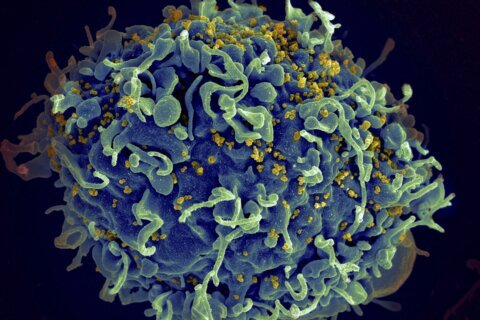As a homeowner, homebuyer or aspiring real estate investor, you want to understand the housing market more. Median home prices, mortgage interest rates and average days on market are all valuable metrics to grasping current activity on the market.
But how homeowners are able to hold onto their existing properties is just as important. If you’re trying to understand whether we’re headed for a housing market crash, foreclosure rates are an imperative detail:
— What do foreclosure rates mean?
— Are foreclosure rates on the rise?
— What you should know about foreclosures during the Great Recession.
— What you can expect from foreclosure rates in 2023.
[READ:2023 Housing Market Predictions: Gradual Shift Toward Buyers]
What Do Foreclosure Rates Mean?
Foreclosure occurs when a homeowner defaults on his or her mortgage due to inability to pay, and the lender takes possession of the property as a result.
The process for foreclosure varies slightly across the country based on state law, but it often begins with a foreclosure filing with the court system — the lender files a lawsuit to foreclose. There is a period to attempt to reconcile the defaulted loan, but if it is not, the lender will eventually take possession of the property via the local sheriff’s department, which carries out the eviction.
However, it’s important to distinguish whether the rate you’re looking at includes all actions taken in the foreclosure process, or if it’s in reference to initial foreclosure filings to start the process, default notices, scheduled auctions or the final process of bank repossession. When someone says a property is “in foreclosure”, it’s often in reference to a foreclosure filing, but a homeowner facing foreclosure can emerge from foreclosure without the bank taking the home.
“Typically, about 1% of mortgages are in foreclosure at any one point in time,” says Rick Sharga, executive vice president of market intelligence at real estate data company ATTOM, based in Irvine, California.
While the foreclosure rate is an important metric to keep an eye on in order to understand the housing market in full view, it’s not necessarily going to help you predict what’s happening next. Foreclosures are more of a lagging indicator, Sharga explains, compared to unemployment rates, homebuyer activity and more.
[Read: How to Tactfully Back Out of a Real Estate Deal.]
Are Foreclosure Rates on the Rise?
ATTOM reports foreclosure filings were reported on 324,237 properties in the U.S. in 2022, a 115% increase compared to 2021. Of those, lenders repossessed 42,854 properties, a 67% increase compared with 2021.
Take that information with a grain of salt, however, as the foreclosure moratoriums across the U.S. due to the COVID-19 pandemic effectively halted nearly all foreclosures through most of 2021.
“The only loans foreclosed on in the last two years were naked and abandoned properties and commercial loans,” Sharga says, in reference to 2020 and 2021. “That probably prevented, a rough estimate, at least 3 million unnecessary foreclosures.”
To get a better sense of whether 2022 saw an abnormal increase in foreclosure filings, most experts look to 2019 — prior to the start of the pandemic in the U.S. — as a comparison. “I would call that the last ‘normal’ year in real estate,” says David Childers, president of real estate resource and market information company Keeping Current Matters, based in Richmond, Virginia.
Compared to 2019, 2022’s foreclosure filings were down 34%, and repossessions were down 70%, according to ATTOM. The properties facing foreclosure and enduring repossession by the lender aren’t, in most cases, new financial troubles for the borrowers. “It’s clearing the backlog of existing loan problems,” Sharga says.
What You Should Know About Foreclosures During the Great Recession
Even the thought of foreclosure can be frightening, especially combined with the memories that many people have of the foreclosure crisis that occurred throughout the Great Recession. Subprime mortgages led to vastly more people in default than had been the case previously, and foreclosures were all too widespread for years afterward.
From 2008 to 2011, there were more than 4.1 million completed foreclosures, according to a report from CoreLogic, a financial, property and information analytics and intelligence company based in Irvine, California.
Home values dropped significantly at the time as well, due to inflated valuation in prior years and the sudden lack of demand from anyone. People were struggling to make mortgage payments, but their mortgage was also greater than the home’s value.
Many of the foreclosures, as a result, were considered “strategic default,” Childers says. “That means, ‘we owe more on the home than it’s worth, so we’re just going to walk away.'”
[READ: What Is a Housing Market Price Correction?]
What You Can Expect From Foreclosure Rates in 2023
Lenders and homeowners alike have learned a lot from the foreclosure crisis, along with the establishment of a regulated mortgage market that prevents a subprime mortgage market from developing. Combined with low inventory of houses for sale across the U.S., foreclosures are expected to remain fairly low in 2023.
“We don’t forecast that we’ll be back to normal (foreclosure) levels until Q3, Q4 of this year,” Sharga says, referring to meeting 2019’s foreclosure filing rate. Even then, Sharga notes that 2019 itself saw relatively low foreclosure activity compared to prior years.
A major factor helping homeowners to avoid foreclosure now is the high equity among homeowners in the U.S. CoreLogic reported the average equity per borrower was almost $300,000 in the second quarter of 2022. That much equity makes it much easier for homeowners, when faced with sudden financial difficulty, to sell their home and still see profit beyond what they owe to the lender.
“Someone puts a house on the market in this country and it’s priced right, it sells quickly,” Childers says.
That’s one reason why so many fewer properties that were part of a foreclosure filing were repossessed — 324,237 filings to 42,854 repossessions, according to ATTOM.
“We’re seeing the foreclosure process start, but we’re seeing the foreclosure repossession much less,” Sharga says.
Many economists predict a mild recession before the end of 2023, largely as a reaction to the Federal Reserve’s increasing interest rates in an effort to curb inflation. While this could include an increase in unemployment, both Sharga and Childers note employment and homeowner equity seems steady enough to ride the wave of recession without major fallout.
“I don’t believe we’re going to see a scenario in this country where there would be mass layoffs that lead to foreclosures,” Childers says.
More from U.S. News
How to Find a Real Estate Agent
10 Helpful House Hunting Apps for 2023
What You Need to Know About Foreclosure Rates originally appeared on usnews.com







